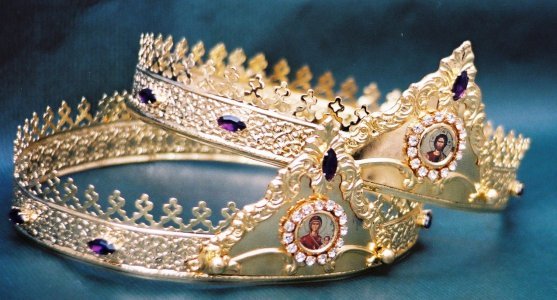 If you know anything about the history of high-society journalism inside the Beltway, then you understand that the Washington Post had to publish some kind of Sally Quinn piece about that wedding over on the other side of the Atlantic. I do not know if the resulting piece is journalism or not, but it does offer some insights and information in her first-person, my-feelings-are-the-story style that has helped define much of the foggy content in the "On Faith" project.
The big idea here is this news flash: Episcopalians really do classy weddings.
If you know anything about the history of high-society journalism inside the Beltway, then you understand that the Washington Post had to publish some kind of Sally Quinn piece about that wedding over on the other side of the Atlantic. I do not know if the resulting piece is journalism or not, but it does offer some insights and information in her first-person, my-feelings-are-the-story style that has helped define much of the foggy content in the "On Faith" project.
The big idea here is this news flash: Episcopalians really do classy weddings.
Message received. However, note the interesting voice in the opening of the essay. It appears that Quinn is now officially out of her spiritual seeker-agnostic phase.
Prince William and Kate Middleton were married at Westminster Abbey in a traditional Anglican ceremony. ... And though England is a largely secular country, their wedding was, as we say, “high church.” The Book of Common Prayer dictates what is in the service, though much is optional. The couple chose the simplest form, a ceremony of warmth and intimacy rather than grandeur and pomp.
Every wedding has magic. It is the magic of hope, a belief that there is something higher that we can all attain, if just for a short time, by connecting to someone we truly love.
What makes the Anglican or Episcopal service so magical is the adherence, though it may seem rigid to some, to time-honored ritual. The music, the hymns, the readings, the prayers, the vows.
The intriguing word is the "we" in "as we say, 'high church.' "
Who is this "we"? Is this a reference to her family? Is Quinn speaking in a papal plural? Is "we" her Episcopal/Anglican family, as in her chosen church? Or is "we" the Post editorial board?
It is also interesting to note her belief – simply stated – that these perhaps rigid vows do have some magic in them, "if just for a short time." I rather think that the Archbishop of Canterbury would insist that the vows remain, ideally, eternal.
After some personal, family history – an essential Quinn element these days – the story gets back to the meaning of marriage, Anglican-style.
However, it was the passage at the end that caught my Eastern Orthodox eye. Pay close attention:
The short homily by the Right Reverend and Right Honorable Richard Chartres, Bishop of London, reflected a passage from the Book of Common Prayer. “In a sense, “ he said, “every wedding is a royal wedding with the bride and groom as king and queen of creation, making a new life together so that life can flow through them unto the future.”
The actual passage is this: “Let their love for each other be a seal upon their hearts, a mantle about their shoulders, and a crown upon their foreheads.” This notion comes from the Greek Orthodox tradition: on the day of the wedding, every bride and groom is a king and a queen of the world.
Certainly William and Kate were today.
Well now, let me briefly discuss that Orthodox "notion," which is actually not linked to the Greeks alone, but to the ancient faith of the Eastern Churches.
The liturgical high point of the Orthodox wedding rite is, in fact, the "crowning" of the couple as the king and queen of their new home as a new sacramental reality in their faith and in the context of the church. In the Orthodox rite, everything takes place in the context of that larger sacramental reality. Click here for some additional information about that image and doctrine.
But what do these crowns truly symbolize? Note carefully the words of the hymn that is sung while the husband and wife circle the Gospel Book three times:
O Isaiah dance your joy, for the Virgin is with child; and shall bear a Son, Emmanuel both God and man! And Orient is His name, whom magnifying we call the Virgin blessed.
Holy Martyrs, who have fought the good fight and have received your crowns: entreat the Lord that He have mercy on our souls.
Glory to You, O Christ God, the Apostles’ boast, and the martyrs’ joy, whose preaching was the consubstantial Trinity.
So they are given crowns – the crowns of martyrs. They will surrender their life again and again for the other as part of the sacrament that is marriage. That is the reality captured in the powerful symbol of the crowns.
I am not sure that Quinn has that part clear.
